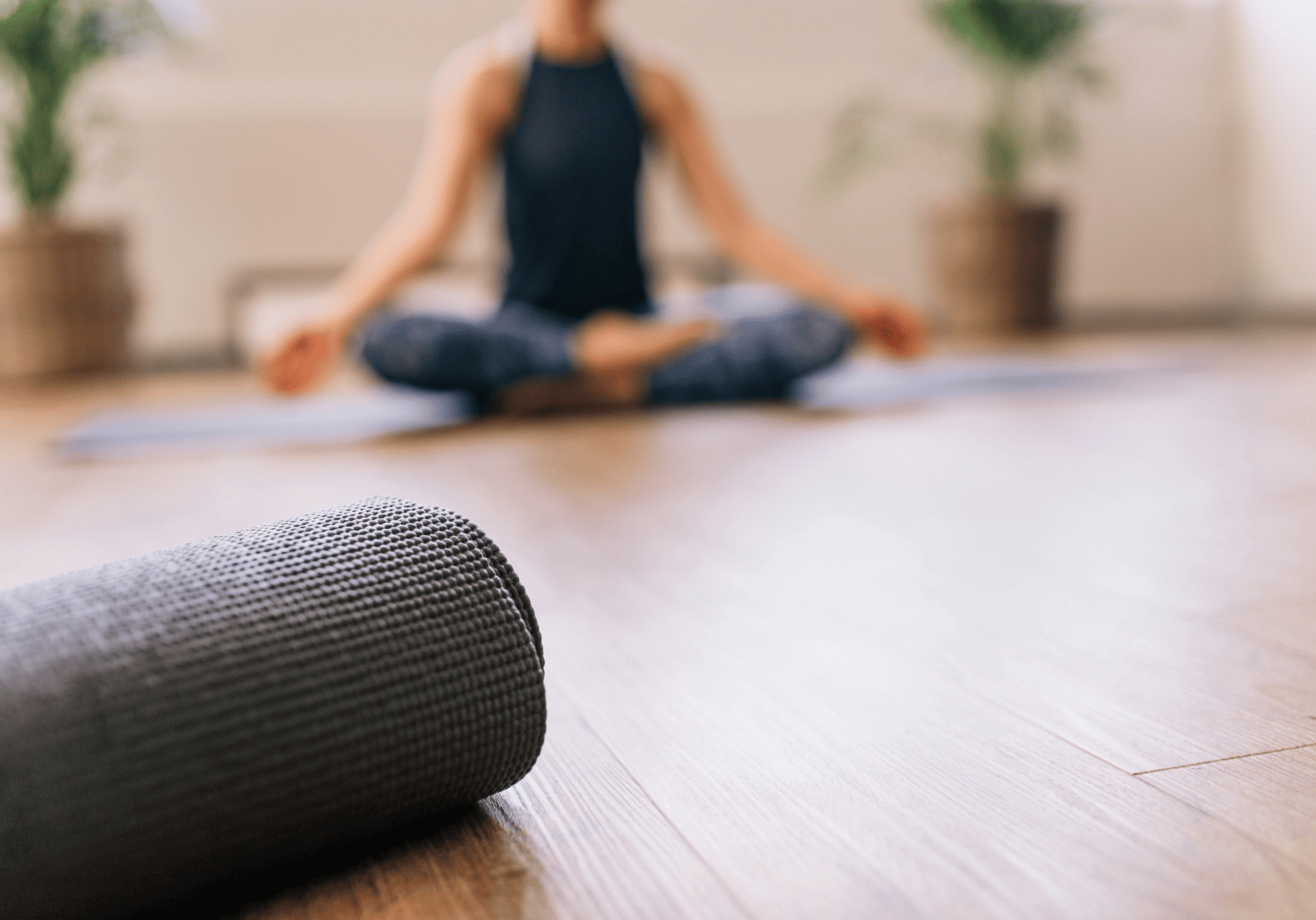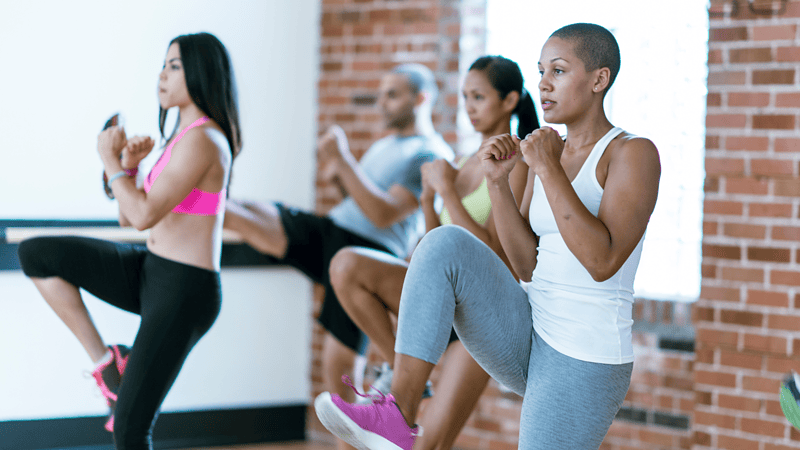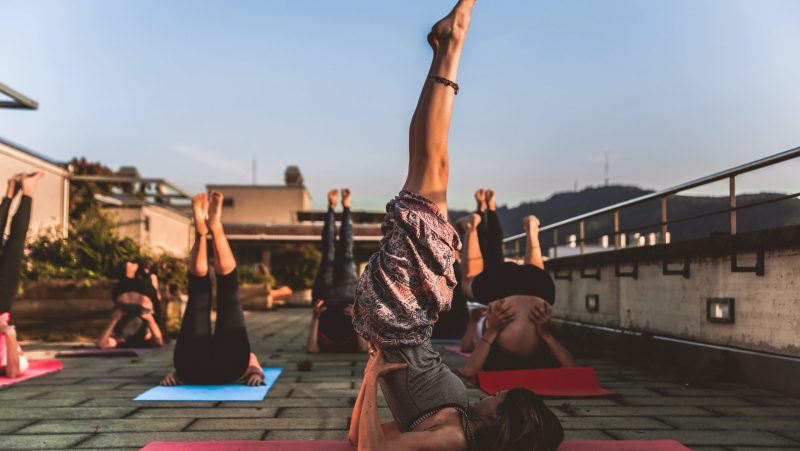
Can I Replace Cardio With Yoga?
Balancing Cardio and Zen: Navigating the Intersection of Yoga and Fitness for Optimal Well-being - By Beth Rush
Reading time: 5 minutes
Is yoga alone sufficient to meet your fitness quota?
If you’re like most people, you don’t have an unlimited amount of time to work out. How can you ensure you cover the basics and still tend to other life needs like work and raising a family? Could replacing cardio with yoga get you twice the bang for your exercise buck?
The answer to this question isn’t cut and dried. However, it’s not as difficult to cover your fitness bases as you might think. Here’s how to replace cardio with yoga or integrate it into your complete wellness routine without sacrificing your career or time with your kids.
Can You Replace Cardio With Yoga? Is This a Trick Question?
Anyone who has sweated through a hot power yoga class knows that this ancient practice isn’t always slow and gentle. While all styles emphasize the mind-body connection more than other exercise forms, that doesn’t mean the movement can’t also be hardcore.
The American Heart Association does not count yoga toward your 150 minutes per week of required cardiovascular activity. However, that’s because there are many different styles of this ancient practice. While some variations, like Yin or restorative, might not hit your quota, others can do the trick. You simply have to engage in the right types of classes to reap the desired benefits.
Types of Yoga That Ramp Up the Cardio
The number one tip for replacing cardio with yoga is to talk to your guide before class. Why? You need to ensure they teach at a sufficient intensity level to get you into your target heart rate training zone and keep you there for at least 30 to 45 minutes.
Certain yoga styles, like Ashtanga, naturally lend themselves to cardio. Others vary, depending on your guide. Directory listings to seek include:
- Bikram: This hot style uses Ashtanga moves but adjusts the studio temperature and humidity to match the Indian subcontinent, leaving you sweaty.
- Ashtanga: This ancient vinyasa form flows through the same sequence of poses each time. There are six series, the final four of which require considerable gymnastics skill.
- Power yoga: This style combines vinyasa flows with stationary poses designed to strengthen various muscle groups.
- Vinyasa yoga: Also called “flow yoga,” this style keeps you moving from the beginning of class to the end, with poses held for only a few seconds in between.
Other classes may or may not get you into your target cardio heart rate zone. It’s worth talking to the guide and trying one on a rest day to see if they suit you:
- Hatha yoga: This style features longer holds in poses with vinyasa flows in between. Although more intense versions are typically billed as “power yoga,” you might find your sweet spot here, especially if you’re a beginner.
- Yoga with props: You can now find aerial yoga, yoga on a paddleboard and acroyoga classes at many gyms and studios. The added challenge can ramp up your heart rate.
Methods of Judging Exercise Intensity
How do you know if you can replace cardio with yoga based on your fitness level? After all, in-shape folks might have an easy ride, while beginners could find their tickers pounding from the same class. What is your target heart rate, and how can you tell if you’re within it?
The first method involves mathematical calculations. Begin by finding your maximum heart rate by subtracting your age from 220. Then, take 60% to 85% of that figure to find out your heart rate training zone, with 60% being the lower end. Use a smartwatch or other fitness tracker to check your heart rate several times throughout your session to gauge intensity.
The second is perceived exertion. How hard do you feel like you’re working? Your goal is to get breathy, although you should still be able to hold a conversation — with moderate difficulty and some panting.
Pro-tip: Get mindful. Tune into how your body feels when doing a mathematical exertion check. Once you know what it feels like to work in your target training zone, you can switch to perceived exertion.
Using Yoga to Complement Your Cardio Routine
What if you’re an elite triathlete who doesn’t get enough of a burn from yoga alone? First, congratulate yourself on your superior fitness. Then, realize that flexibility training enhances the cardio work you do and incorporate these poses into your cooldown routine to boost your overall performance.
1. Best Poses for Runners
Runners tend to stress the quads and posterior chain. Cool down with:
- Standing forward folds
- Low lunges
- Downward dog
2. Best Poses for Bikers
Bikers work their legs and back. Cool down with:
- Child’s pose
- Standing forward folds
- Dancer pose
3. Best Poses for the HIIT Set and Mixed Cardio
In general, you want to stretch your hamstrings, quads and calves after any cardio workout. You also benefit from hip openers to hit the plethora of tiny muscles that connect your hip bones to your torso. Therefore, try:
- Sun salutation B variation with a low lunge
- Pigeon pose
- Cobbler’s pose
Alternating Cardio and Yoga
Maybe you can’t replace cardio with yoga because of your advanced fitness level. That’s okay. There’s good news if you like a long, restorative or Yin session — you don’t have to train your cardiovascular system daily. Rest days help your muscles recover from more vigorous workouts, so consider alternating intensity with gentleness.
While you should stretch after each workout, use your rest days for longer, slower yoga sessions. This method also lets you focus on the mental aspects of your practice, nurturing your mind with your body.
Yoga: A Replacement for or Complement to Cardio
Can you replace cardio with yoga? In many cases, yes, if you choose the right form. However, even elite athletes can benefit from complementing their routine with a regular practice. Stretch after each workout, use your leg days and consider a sweaty, invigorating style as an alternative to the elliptical.






